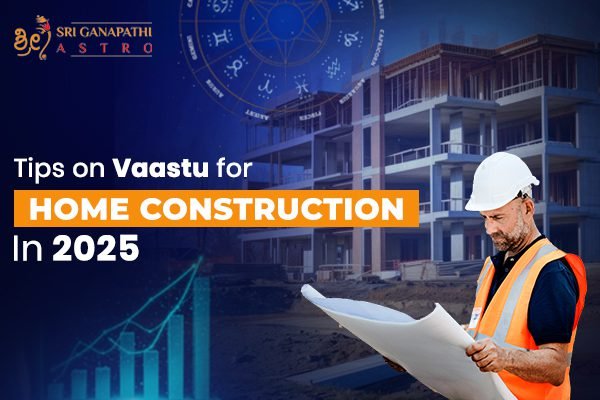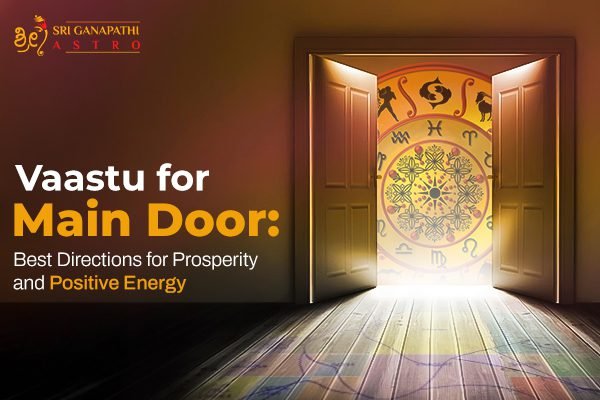For over 5000 years, people have been turning to Vaastu for home construction and renovation. It’s one of the most ancient architectural sciences that has proved to bring forth harmony and prosperity. Although modern construction makes it challenging, there are ways to achieve the perfect vaastu house plan.
So, you need some Vastu Shastra tips for your upcoming home renovation. Well, you’ve come to the perfect read.
A home is more than just walls, doors, and a roof; it is a place where families grow, emotions thrive, and memories are created.
In India, the design and construction of a home often go beyond architectural beauty; they connect deeply with age-old traditions. Among them, Vaastu Shastra continues to influence how people live in their spaces.
As we approach the end of 2025, the role of Vaastu has become even more significant. With changing lifestyles, rapid urbanisation, and the rise of smart homes, people are seeking ways to harmonise traditional wisdom with modern living. They are turning to Vaastu remedies for health, happiness, and prosperity.
In this detailed article, let’s explore some practical home plans as per Vaastu. From choosing the right plot to designing interiors, let’s learn how to balance energy and functionality.
What is Vaastu for Home Construction?
Vaastu or Vaastu Shastra is an ancient Indian science of architecture and design. It deals with creating harmony between human life and the natural environment.
The word “Vaastu” means dwelling or house, and “Shastra” means science or knowledge.
Together, it refers to the set of principles that guide how buildings, whether homes, temples, or workplaces, should be planned and constructed to ensure a balanced flow of energy.
At the core of Vaastu Shastra lies the belief that the universe is made up of five fundamental elements: Earth, Water, Fire, Air, and Space.
A structure built in coherence with these elements is believed to promote health, happiness, prosperity, and peace for its residents.
In an Indian household, basic Vaastu for the home is more than a superstitious belief system. It has become a guide to planning functional, convenient, and spiritually balanced homes. Even in modern architecture, the plans and principles are followed for an uplifting lifestyle.
Why is Vaastu for Homes Relevant in 2025?
As we diligently embrace modernity, cutting-edge tech, and smart construction, a question arises: why is Vaastu still relevant in 2025?
The truth is, Vaastu is more relevant than ever in 2025. Since its core purpose is to create balance between humans, nature, and the spaces we live in, it is vital in socially tumultuous times.
Far from being just an ancient tradition, Vaastu today offers timeless wisdom, complementing the challenges of modern living.
1. Balancing Modern Urban Living
Rapid urbanisation today has led to most people living in compact apartments, gated communities, or high-rise buildings. Such homes lack the natural flow of light, ventilation, and openness.
Simple Vaastu principles, such as keeping the centre of the home open or ensuring windows face East, help counter these issues. They make small or crowded homes feel healthier and spacious.
2. Supporting Mental and Emotional Well-being
Life in 2025, and even after, will be fast-paced and digitally connected. However, the digital upheaval is what makes life stressful.
Long working hours, excessive screen time, and urban noise take a toll on our mental health.
Vaastu home plans create spaces that naturally encourage calmness. For example, placing a pooja room in the Northeast or ensuring bedrooms are in the Southwest fosters peace, grounding, and restful sleep.
3. Sustainability and Eco-Friendly Homes
At present, we all look towards sustainable and energy-efficient housing for the environment, as well as for us.
Interestingly, Vaastu aligns beautifully with eco-friendly architecture. Principles like maximising sunlight from the East, encouraging cross-ventilation, and using natural building materials reduce dependency on artificial lighting and cooling systems. The plans save energy and also create healthier indoor environments.
4. Globally Holistic Living Standards
Just as Feng Shui has influenced interior design worldwide, Vaastu Shastra is gaining recognition across the globe.
Developers in countries like the USA, UK, and Australia now market Vaastu-compliant homes to Indian buyers, as well as foreigners. It highlights that Vaastu for homes remains relevant in the housing market in 2025.
5. A Blend of Tradition and Technology
Smart homes, automation, and advanced construction methods have become highly mainstream. Vaastu doesn’t conflict with these innovations; it complements them.
For example, automated lighting systems can be programmed to mimic a natural sunrise in East-facing rooms. The concept aligns with Vaastu while keeping up with modern convenience.
Vaastu in 2025 is not about rigid rules or superstition. It is about designing spaces that promote health, happiness, and prosperity, while fitting seamlessly into a modern lifestyle.
Whether you live in a small apartment or a luxury villa, Vaastu principles can be adapted to meet your home needs.
Key Principles of Vaastu Shastra
Vaastu Shastra is built on a set of timeless principles that connect architecture with nature. It ensures that a home is more than just a shelter and becomes a space of harmony, balance, and positive energy.
These principles are simple; they are practical guidelines that can be adapted to any home. Let’s learn a little –
1. The Five Elements (Pancha Bhootas)
According to Vaastu, the universe is made up of five elements: Earth (Bhumi), Water (Jal), Fire (Agni), Air (Vayu), and Space (Akash). Each element has a natural influence on our lives.
When these elements are balanced adequately within a home, they create physical comfort, emotional well-being, and spiritual growth.
For example –
- Earth provides stability; hence, heavier rooms like bedrooms are suggested in the South or Southwest.
- Water brings flow and prosperity; ideal for North or Northeast placement of water tanks and bathrooms.
- Fire symbolises energy, making it perfect for Southeast kitchens.
- Air improves health by encouraging cross-ventilation and open windows.
- Space allows freedom, so central areas of homes are kept open and clutter-free.
2. Importance of Directions
Vaastu places great emphasis on the eight cardinal directions (North, South, East, West, Northeast, Northwest, Southeast, and Southwest). Each direction is linked to a specific energy and aspect of life. For instance:
- East is associated with health, growth, and sunlight; best for main entrances and living rooms.
- North or Kubera Moola is linked to wealth and opportunities; ideal for home offices or cash lockers.
- North East or Ishanya Moola inclines to overall prosperity and spirituality; perfect for religious activities and a meditative corner.
- Southwest or Kanni Moola provides stability and strength, making it suitable for master bedrooms.
- Southeast or Agni Moola is connected to fire and energy, making it best suited for kitchens.
By aligning the functions of rooms with the right direction, Vaastu ensures energy flows naturally and supports the household’s well-being.
3. The Brahmasthan (Centre of the Home)
The central zone of the house, known as the Brahmasthan, is considered sacred and should remain open, clutter-free, and bright.
In traditional homes, this was often an open courtyard. In modern apartments, keeping this area spacious and free of heavy furniture allows positive energy to circulate throughout the house.
4. Flow of Energy and Layout
Vaastu emphasises that energy flows like water. It needs pathways to circulate freely. Blockages such as clutter, poorly placed doors, or dark corners can restrict this flow.
That’s why open spaces, wide doorways, and good ventilation are essential features in Vaastu-compliant homes.
5. Proportions and Symmetry
Symmetry is a recurring theme in Vaastu. Square and rectangular plots, balanced room shapes, and proportionate designs are considered ideal. They distribute energy evenly.
Odd-shaped plots or irregular layouts are believed to create imbalances, which can be corrected with adjustments or remedies.
6. Integration of Nature
Vaastu strongly recommends incorporating natural elements into homes.
Open courtyards, indoor plants, natural light, and water features such as fountains or small ponds create a soothing environment. The principle aligns perfectly with eco-friendly housing trends, as well as Vaastu.
In essence, the key principles of Vaastu Shastra are about balance and alignment. It aligns human activity with natural forces so that every corner of the home radiates positivity.
If you are planning a home construction anytime this year, do not just agree to traditional home layouts to fit in Vaastu. The belief system can be adapted to modern construction, making it highly practical even in 2025.
Vaastu Tips for Different Stages of Home Construction
Building a home is one of life’s most significant milestones. So, we might as well do it with the right Vaastu Shastra for a happy and peaceful living.
Let’s break down how Vaastu principles can be applied at each stage of home construction –
1. Choosing the Right Plot
Shape of the plot: Square or rectangular plots are considered most auspicious. They allow for balanced energy flow. Irregular plots, such as triangular or circular ones, may create imbalances.
Slope of the land: Ideally, the land should slope slightly towards the North or East, allowing sunlight and water to flow naturally in favourable directions. Avoid plots sloping towards the South or West.
Surroundings: Avoid plots near graveyards, busy factories, or polluted water bodies. Look for areas surrounded by greenery, open sky, or clean water sources.
2. Designing the Layout
Entrances: The main entrance is one of the most critical aspects in Vaastu. East-facing entrances are considered highly beneficial as they welcome the morning sun and positive energy. North-facing entrances are also auspicious, especially for prosperity.
Zoning of Rooms:
- Northeast – Best for pooja rooms or meditation corners.
- Southeast – Suitable for kitchens, since it represents fire.
- Southwest – Ideal for master bedrooms, ensuring stability.
- Northwest – Good for guest rooms or storage spaces.
- Central area (Brahmasthan): As already mentioned, keep this area open, well-lit, and free of heavy furniture to allow smooth energy circulation.
3. During Foundation and Construction
Starting the work: It is recommended to begin construction in the Northeast corner and gradually move towards the Southwest. It symbolises building growth from light to stability.
Position of pillars and beams: Avoid placing beams directly above doorways or the central part of rooms, as they create a sense of pressure.
Placement of underground tanks and wells: They should be in the North or Northeast to ensure prosperity. Septic tanks, however, are better placed in the Northwest.
4. Structural Elements and Rooms
- Kitchen: Should be in the Southeast or Northwest. Cooking should ideally be done facing East, as it brings health and vitality.
- Living Room: Best placed in the North or East, with expansive windows to invite light and ventilation.
- Bedrooms: Master bedrooms in the Southwest, children’s rooms in the West or Northwest, and guest rooms in the Northwest work well. Avoid bedrooms in the Northeast.
- Bathrooms and Toilets: Best in the West or Northwest, and should never be placed in the Northeast corner.
- Staircases: If your home has multiple levels, staircases should ideally rise from East to West or North to South. Southwest is a good location for them.
5. Interior Finishing and Décor
- Colours: Light, soothing colours like white, cream, pale yellow, and light green are considered ideal. Each room can be painted based on its purpose: blue for bedrooms (calmness), green for study areas (focus), and warm shades for kitchens (energy).
- Furniture Arrangement: Heavy furniture like sofas, wardrobes, or beds should be placed towards the South or West walls. Lighter elements and décor can be in the North or East.
- Lighting: Natural light is highly valued in Vaastu Sashtra. Large windows in the East and North directions ensure this. Artificial lighting should be soft and warm, avoiding dark corners.
6. Final Touches and Moving In
Pooja or house-warming (Griha Pravesh): Before moving in, a Vaastu-compliant house-warming ceremony is often performed to purify the space and invite positive energies.
Plants and greenery: Adding tulsi, money plants, or small indoor plants near the entrance or balconies boosts energy flow. Avoid thorny plants like cactus indoors.
Decorative elements: Symbols of positivity, like rangolis at the entrance, mirrors facing walls, and water fountains in the North, are small yet powerful Vaastu-friendly additions.
Why Following Vaastu in Every Stage Matters?
By applying Vaastu from the beginning to the finishing stages, you don’t just create a home, you make a living space that nurtures health, prosperity, and peace. Whether it’s the placement of the entrance, the slope of the land, or the choice of colours, each decision contributes to a balanced flow of energy.
Modern Adjustments to Vaastu in 2025
Vaastu Shastra has always been a flexible science. It is capable of adapting to changing lifestyles, architecture, and technology.
While its foundation remains rooted in balance and harmony, the way people apply it today has evolved to fit modern homes, apartments, and even smart living spaces.
Let’s look at how Vaastu principles can be practically adjusted for today’s needs without losing their essence –
1. Vaastu for Apartments and High-Rise Living
In earlier times, Vaastu was designed for independent houses with courtyards and open plots. Today, many people live in high-rise apartments where customising the structure is not always possible. In such cases –
- Main entrance direction: Even if your building’s entrance is not ideal, ensure your flat’s main door opens in a positive direction, like North, East, or Northeast.
- Sunlight and ventilation: Use large windows, reflective surfaces, and indoor plants to bring natural light and airflow into the home, balancing the energy flow.
- Remedies for limitations: If certain rooms are not in Vaastu-compliant zones, minor adjustments like placing a mirror, using specific colours, or adding elements of fire can help balance the energy.
2. Integration with Smart Homes
Modern homes in 2025 are increasingly automated, with smart lighting, temperature control, and voice-activated devices.
Vaastu can easily align with these technologies –
- Lighting systems: Program smart lights to brighten in the East during mornings to mimic sunrise and create a natural rhythm in the home.
- Temperature control: Ensure that bedrooms in the Southwest remain cool and calm with automation, supporting restful sleep as per Vaastu.
- Smart décor: Even things like automated curtains can help regulate natural light flow, which is crucial in Vaastu home design.
3. Smaller Homes and Compact Spaces
Urban living often means smaller apartments or studio homes.
Vaastu can still be applied here with a focus on space management and energy flow –
- Keep the central part of the home uncluttered, even if it’s small.
- Use mirrors strategically to expand space and reflect light, especially in darker corners.
- Choose multipurpose furniture placed along the South or West walls, leaving the North and East sides lighter and open.
4. Eco-Friendly and Sustainable Designs
With growing awareness of climate change, many homeowners in 2025 prefer sustainable homes. Interestingly, Vaastu principles naturally complement eco-friendly living –
- Water harvesting tanks in the North or Northeast align with prosperity and sustainability.
- Solar panels are best placed on the Southeast side, where the fire element is strongest.
- Green balconies and rooftop gardens in the East or North enhance airflow, health, and positivity.
5. Remedies without Major Renovation
Many people live in rented homes or ready-made apartments where structural changes are impossible.
In these cases, Vaastu remedies can be more practical and symbolic –
- Colours: Wall paints, curtains, and décor items in favourable colours can balance room energies.
- Crystals and Mirror: Used to redirect or amplify positive energy flow.
- Indoor Plants: Money plant in the North or Tulsi in the Northeast helps attract prosperity and health.
- Lighting Remedies: Dark corners or improperly placed bathrooms can be corrected with bright, warm lighting.
6. Blending Tradition with Modern Aesthetics
Instead of looking “traditional” or rigid, homes now follow Vaastu while still reflecting contemporary designs –
- Open kitchens in Southeast zones with sleek modular fittings.
- Minimalist courtyards or central atriums in apartments serve as the Brahmasthan.
- Large glass windows in the East, balancing Vaastu requirements with modern design.
The essence of Vaastu is not about mindlessly following rules. It’s about creating a balanced and supportive living environment. In 2025, when people are more aware of mental health, sustainability, and functionality, Vaastu has naturally adjusted to meet these evolving needs.
Common Vaastu Mistakes to Avoid
While many people are eager to apply Vaastu Shastra in their homes, mistakes often happen due to a lack of awareness, rushed construction, or reliance on half-knowledge.
These mistakes may seem small at first, but they can disturb the balance of energy in the house. The good news is that most of them can be avoided with the proper guidance.
Let’s look at some of the most common Vaastu mistakes and how to steer clear of them –
1. Incorrect Placement of the Main Entrance
The entrance of the home is like its “mouth”, and it decides what kind of energy flows in. A poorly placed entrance can block positivity.
Avoid southwest-facing entrances or clutter near the main door. Keep the main entrance in the North, East, or Northeast and make sure it is clean, well-lit, and welcoming.
2. Blocking the Northeast Zone
The Northeast (Ishanya) is considered the most sacred and powerful direction, associated with spiritual energy, clarity, and growth. Many people make the mistake of building toilets, staircases, or heavy storerooms here.
Use this corner for meditation, a pooja room, or even a small garden space. Keep it open, light, and clutter-free.
3. Wrong Placement of the Kitchen
The kitchen represents fire (Agni), and if placed in the wrong zone, like the Northeast or the Southwest, it may cause conflicts, health issues, or stress.
Place the kitchen in the Southeast or Northwest. Also, ensure the person cooking faces East for health and vitality.
4. Bedrooms in the Wrong Direction
Bedrooms play a vital role in rest and relationships. Placing the master bedroom in the Northeast or Southeast often leads to instability, stress, or frequent quarrels.
Place the primary bedroom in the Southwest for stability and strength. Children’s rooms can be in the West or the Northwest.
5. Toilets and Bathrooms in the Wrong Zones
Bathrooms, if placed in sacred or sensitive zones, can cause energy imbalances.
Place toilets in the West or Northwest. Keep them clean, ventilated, and separate from the kitchen or pooja areas.
6. Poor Ventilation and Lack of Natural Light
A home without proper ventilation or sunlight feels heavy and stagnant. Many modern apartments ignore this, creating unhealthy environments.
Ensure at least one East-facing window and cross-ventilation. If natural light is limited, use mirrors, indoor plants, and bright colours to enhance energy.
7. Ignoring Clutter and Storage Placement
Many people underestimate the impact of clutter, but in Vaastu, blocked corners and overflowing storerooms can restrict positive flow.
Keep storage in the South or West zones. Regularly declutter to maintain fresh energy.
Most Vaastu mistakes don’t require tearing down walls or rebuilding your house. Instead, they can often be corrected with simple remedies like rearranging furniture or using colours wisely.
The key is awareness. Once you know what to avoid, you can create a home that feels balanced, peaceful, and supportive of your life goals.
Ideal Vaastu House Plans with Sri Ganapathi Astro
In 2025, as homes become more innovative and sustainable, Vaastu Shastra will continue to offer timeless wisdom. It doesn’t demand blind faith but offers practical guidelines rooted in natural balance.
There is no one-size-fits-all Vastu for house construction that everybody must follow. However, the tips and suggestions we mentioned are deep-rooted and science-backed.
From choosing the right plot to designing interiors and even correcting flaws with simple remedies, Vaastu ensures that your home is not just a physical structure but a sanctuary of peace, health, and prosperity.
So, when planning a home, ensure you know the proper measures and avoid the mistakes at all times.
At Sri Ganapathi Astro, we look forward to helping your space achieve the right spiritual balance. With years of experience as the best Vastu consultant in Bangalore, we have been blending traditional principles with modern design and technology that create a space for mental, physical and emotional growth.
Get your perfect house design according to Vaastu Sashtra today!





